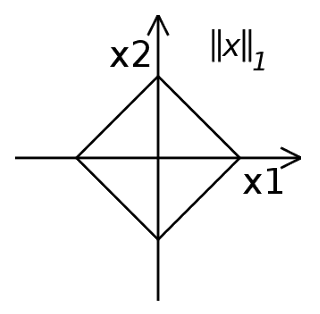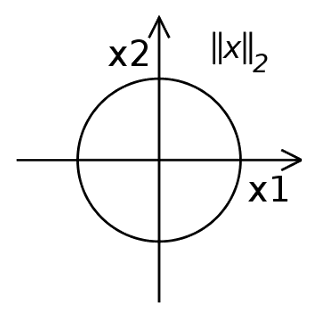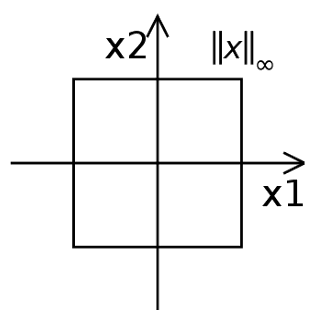p-Norms (Taxicab Norm, Euclidean Norm and infinity-norm)
— linear algebra, norms — 1 min read
Norms are a measure of distance. Norm is defined as follows: For p≥1,
∣∣x∣∣p≡p∣x1∣p+∣x2∣p+...+∣xn∣pTaxicab Norm (1-Norm)
When p=1, then the norm is said to be taxicab norm. The distance derived from this norm is called Manhattan distance.
∣∣x∣∣1≡∣x1∣+∣x2∣+...+∣xn∣Euclidean Norm (2-Norm)
It is the most common notion of distance. When p=2, then the norm is said to be euclidean norm.
∣∣x∣∣2≡∣x1∣2+∣x2∣2+...+∣xn∣2∞-norm
Infinity norm is defined as,
∣∣x∣∣∞≡max(∣x1∣,∣x2∣,...,∣xn∣)Proof
∣∣x∣∣p∣∣x∣∣p≡i=1∑n∣xi∣p Equation of p-norm≡mi=1∑nm∣xi∣p m=max(∣xi∣)As, p approaches ∞, only the term mmax∣xi∣ equals to 1, while other terms approaches to 0. Thus, ∑i=1nm∣xi∣p=1
∴ ∣∣x∣∣∞≡max(∣xi∣)Visualising norms as a unit circle
This section will show visualization when, ∣∣x∣∣p≡1. Let us consider for 2 Dimensional case.
1-Norm
The equation is given as,
⟹∣∣x∣∣1=∣x1∣+∣x2∣1=∣x1∣+∣x2∣Thus we get the following equations,
When x1≥0 and x2≥0, x2=1−x1 [First quadrant]
When x1≤0 and x2≥0, x2=1+x1 [Second quadrant]
When x1≤0 and x2≤0, x2=x1−1 [Third quadrant]
When x1≥0 and x2≤0, x2=−x1−1 [Fourth quadrant]
Plotting these equations, we get,

2-Norm
The equation is given as,
⟹∣∣x∣∣2=∣x1∣2+∣x2∣21=x12+x22As this equation represents a unit circle, we get the following graph,

∞-norm
The equation is given as,
⟹∣∣x∣∣∞=max(∣x1∣,∣x2∣)1=max(∣x1∣,∣x2∣)This gives the following graph,

Substituting different values of p, these equations can be further visualised in Wolfram Mathematica Demonstaration